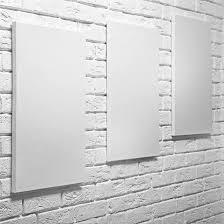As inkjet canvas continues to gain popularity in the fine art and photographic digital printing industry, the multitude of available brands and varieties will persist and eventually flood the market in an attempt to take advantage of this increasingly desirable consumable. Current market research shows that inkjet canvas is selling three times more than inkjet paper, which historically, has never been the case. This swing in market trends suggests that art consumers are impressed by the aesthetic appeal and novelty of digitally printed inkjet canvCANVA as as it is a relatively new, yet logical medium for fine art reproduction. As an entrepreneur running a printmaking business, selecting an inkjet CANVA that will be the foundation for your reputation and long-term success amid the array of possibilities, can be a daunting if not impossible undertaking. Nevertheless, it is the responsibility of the printmaker to understand and test inkjet canvas to source the highest quality to ensure sustainable-revenue and the integrity for their business. Therefore the purpose of this article is to provide printmakers with the proper tools to evaluate inkjet CANVA based upon empirical data and measurable attributes; in an attempt to produce higher-quality, more-archival, and ultimately more sellable fine art inkjet canvas prints.
In order to properly evaluate inkjet CANVA for your printmaking business, several criteria must be evaluated and considered. This criterion can be broken down into four primary categories: aesthetic appeal, longevity, production/business practicality, and brand association. Testing multiple brands and types of inkjet canvas is the best thing you can do for your business, your customers, and the fine art industry as a whole. That being said, the first thing you will need to do to get started is purchase sample material from several leading inkjet canvas manufacturers. Let this article be the guide or checklist to walk you though the important evaluation process. Aesthetic Appeal
This category has been listed above all others because it is the single most important factor for evaluating your primary, "house" inkjet canvas. The fact is that this is the fine art industry and whether you are the artist, a gallery owner, a publisher, or a printmaker, the ultimate universal goal is to sell art. Art is predominantly sold as a result of its aesthetic appeal and the emotional derivative of the image presentation. In other words, the better your prints look, the more your artists will sell, which will naturally result in more printing business. If the artists that you print for are confident that you are reproducing their work in the most visually appealing manner and this is reflected in their print sales, you can be sure they will continue to employ your services. On the other hand, if the artist decides to shop around or happens to come in contact with an alternative printmaker who is obviously producing superior inkjet canvas prints, the artist will be gone in an instant. The only way to be certain that you are producing the most visually appealing inkjet canvas prints, is to test several different inkjet canvases for color gamut, Dmax (optical density), resolution, texture, and weight. Let us carefully consider each of these attributes individually.
Color Gamut - In this increasingly competitive industry simply offering great color reproduction is not enough. You need to offer the best color reproduction. Although precise color gamut measurement tools, such as a Colorimeter or spectrophotometer can and should be used if available, the naked eye is usually enough to distinguish a superior inkjet canvas. Print a color target, which consists of several individual color patches, on each inkjet canvas that you are evaluating. Use these targets to compare each individual color to determine which inkjet canvas produces the best color gamut. It is also recommended to print the same, colorful image on each inkjet canvas and see which produces the most vibrant colors
.
Dmax - Dmax is a measure of maximum density of an image's color but more specifically its black density. Again, the most precise measurements can be taken with a densitometer, but the naked eye will suffice if this equipment is not available to you. When discussing paper and inks, Dmax is commonly defined as the blackest black possible. Black density is arguably the most discernable characteristic in evaluating the quality of ink, paper, inkjet canvas, and even printmakers themselves. Therefore achieving the blackest black possible should be the most critical concern for every fine art printmaker. In this increasingly competitive industry, as with color gamut, offering great blacks is simply not enough. You need to offer the blackest bla
